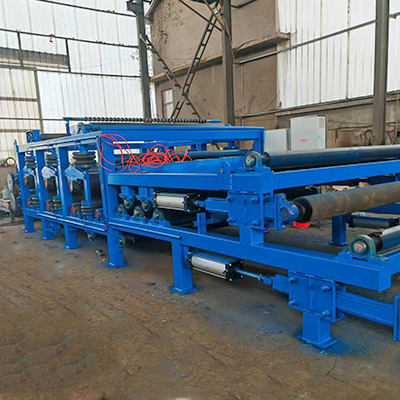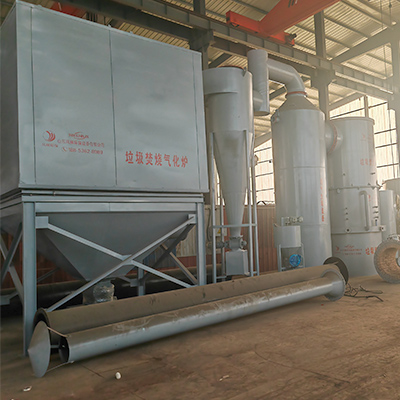Welcome to My Blog! 🌟
I’m so glad you’re here! Before we jump into the exciting content, I’d love for you to connect with me on my social media platforms. It’s where I share extra insights, interact with our amazing community, and post regular updates. Here’s how you can join the conversation:
📘 Facebook: Follow me on Facebook for more updates
Now, let’s dive into the journey ahead. I hope you find everything here both engaging and valuable. Together, let’s explore, learn, and grow! 🚀
Table of Contents
Introduction
Selecting and operating a small incinerator can revolutionize waste management for homes, labs, and small-scale facilities. These compact systems offer convenient disposal of combustible materials, reduced landfill dependence, and controlled emissions when used correctly. However, thriving with a small incinerator requires awareness of the most common pitfalls. From installation oversights to operational missteps, avoiding these mistakes is critical to safety, regulatory compliance, and optimal performance.
In this comprehensive guide, we explore five frequent mistakes associated with small incinerator usage and management. For each mistake, we explain why it occurs, outline its potential consequences, and provide actionable solutions. Whether you are a first-time buyer or a seasoned operator, mastering these best practices ensures you leverage your small incinerator effectively, prolong its lifespan, and safeguard people and the environment.
Mistake 1: Neglecting Proper Ventilation for Your Small Incinerator
One of the most serious mistakes in small incinerator operation is underestimating the importance of ventilation. A small incinerator generates substantial heat and exhaust gases, and without proper ventilation, these emissions can pose significant risks. Without adequate airflow and venting:
- Health Hazards: Toxic gases like carbon monoxide, dioxins, and furans can accumulate if not vented properly. These gases pose serious health risks, including dizziness, respiratory issues, and even long-term damage when exposed in high concentrations.
- Fire Hazards: Excessive heat and gases trapped in poorly ventilated spaces can pose a risk of fires or even explosions. The pressure buildup in the system can damage the incinerator’s internal components, leading to costly repairs or a full system failure.
- Legal Consequences: In many jurisdictions, failure to meet ventilation requirements can result in violations of local air quality standards, fines, or the closure of your incinerator facility. Not complying with local building codes could lead to unwanted legal action or environmental lawsuits.
Ensuring proper ventilation begins in the planning phase. Evaluate building blueprints and consult with HVAC professionals to design a dedicated flue or chimney system. The vent should extend above roofline obstructions and meet local code requirements for clearance. Installing high-temperature-rated ductwork and insulated collars prevents heat transfer to combustible materials.
During operation, maintain clear air intake and exhaust pathways. Regularly inspect vents for blockages from ash, bird nests, or debris. Implement routine cleaning schedules to remove buildup and verify that draft-inducing components, such as chimney caps or dampers, function smoothly. By investing effort in ventilation, small incinerator users protect both people and property from the risks of inadequate exhaust handling.
Mistake 2: Ignoring Feedstock Specifications for Your Small Incinerator

Achieving efficient combustion in a compact incinerator depends heavily on selecting appropriate materials to burn. Many operators make the mistake of disregarding feedstock specifications, leading to:
- Incomplete Combustion: Burning wet, high-moisture, or inappropriate materials can result in incomplete combustion, which produces excessive smoke, ash buildup, and odorous emissions. These emissions not only reduce the efficiency of the incinerator but also may lead to local air quality violations.
- Clogging and Maintenance Issues: Feedstocks with high moisture content or corrosive materials can easily clog the grates, burn ports, and waste trays. This leads to increased maintenance requirements and downtime, ultimately costing more in repairs and servicing.
- Damage to Refractory Linings: Refractory linings protect the internal structure of the incinerator from the extreme heat generated during combustion. Burning corrosive materials such as halogenated plastics can damage the refractory linings, which are expensive to replace and may significantly shorten the incinerator’s operational life.
Manufacturers typically provide detailed guidelines on acceptable materials, such as dry paper, specific plastics, contaminated lab glass, or medical waste. Before loading, verify moisture levels below 20 percent and avoid halogenated plastics that can release toxic compounds. Group feedstocks by type and moisture content to maintain a consistent burn profile.
Implement a feed schedule that balances burn rate and chamber temperature. Overloading the chamber can starve flames of oxygen, while underloading reduces thermal efficiency and prolongs operating cycles. Use calibrated weighing scales and moisture meters to monitor feed quality. By aligning your input materials with manufacturer specifications, you ensure a clean, efficient burn and extend the service life of your small incinerator.
Mistake 3: Skipping Routine Maintenance on Your Small Incinerator
A small incinerator is only as reliable as the care it receives. Skipping routine maintenance can transform a dependable system into a hazard, resulting in:
- Decreased Efficiency: A lack of regular maintenance often leads to a gradual reduction in the incinerator’s thermal efficiency, resulting in higher fuel consumption and longer operational cycles. This can drive up operational costs significantly.
- Premature Wear of Critical Components: Components like burner nozzles, refractory linings, and seals are subject to wear and tear from the intense heat and continuous use. Without regular checks and replacement of these parts, the risk of failure increases. For instance, a worn-out gasket could cause a loss of heat or gas leaks, leading to inefficiency and potential safety hazards.
- Risk of Unplanned Downtime: Unplanned failures due to skipped maintenance can bring your operation to a halt. Depending on the severity of the issue, downtime can lead to costly emergency repairs and extended periods without incinerator operation, which disrupts business operations.
Establish a maintenance log with daily, weekly, and monthly checklists. Daily tasks include checking ash levels, cleaning waste trays, and verifying proper gas or fuel supply if applicable. Weekly checks focus on inspecting refractory linings for cracks, ensuring burner ports are clear, and testing safety interlocks. Monthly activities should cover lubrication of mechanical parts, thorough chimney sweep, and calibration of control instruments.
Partner with certified service technicians for annual inspections and component replacements. Document each maintenance action and correlate it with performance metrics like burn time and emission readings. Proactive upkeep preserves the functionality of your small incinerator and prevents avoidable malfunctions.
Mistake 4: Overlooking Emission Monitoring in Small Incinerator Operations

Environmental regulations demand that incinerators, regardless of size, comply with stringent emission standards. Overlooking emission monitoring can lead to:
- Excessive release of particulates, heavy metals, and acid gases, harming local ecosystems.
- Regulatory fines, shutdown orders, and reputational damage.
- Liability for health impacts on workers and surrounding communities.
Install continuous emission monitoring systems (CEMS) or periodic stack testing equipment, as mandated by local authorities. Key parameters to track include particulate matter (PM), nitrogen oxides (NOx), sulfur dioxide (SO₂), and carbon monoxide (CO). Use calibrated sensors and data loggers to capture real-time readings.
Set alert thresholds in your control system to flag deviations immediately. For instance, if particulate counts rise above permissible limits, the system can trigger an alarm and automatically adjust combustion air supply or pause feed operations. Maintain records of all emission data and testing certificates to demonstrate compliance during audits.
Mistake 5: Failing to Train Personnel on Small Incinerator Safety
Human error remains a leading cause of incidents in incinerator use. Failing to train staff properly can result in:
- Misoperation of controls, leading to overpressure or flameouts.
- Incorrect loading techniques causing smoldering fires and hazardous flare-ups.
- Inadequate response to alarms or emergency shutdown procedures.
Develop a comprehensive training program that covers start-up and shutdown protocols, normal and abnormal operating conditions, and emergency procedures. Include hands-on demonstrations, written manuals, and competency assessments. Emphasize personal protective equipment (PPE) requirements, such as heat-resistant gloves, safety goggles, and respiratory protection when handling ash or performing inspections.
Refresh training annually and whenever process changes occur. Encourage a safety culture by holding routine safety meetings, sharing near-miss incidents, and rewarding compliance. Well-trained personnel are your first line of defense in ensuring safe and efficient operation of your small incinerator.
Common Mistakes Overview Table
| Mistake | Consequences | Preventive Measures |
|---|---|---|
| Neglecting Proper Ventilation | Toxic gas buildup, property damage, air quality violations | Professional vent design, regular vent cleaning |
| Ignoring Feedstock Specifications | Incomplete combustion, odorous emissions, equipment corrosion | Follow manufacturer guidelines, monitor moisture content |
| Skipping Routine Maintenance | Reduced efficiency, component wear, unexpected breakdowns | Scheduled inspections, maintenance logs, certified servicing |
| Overlooking Emission Monitoring | Regulatory fines, environmental harm, health risks | Install CEMS, set alert thresholds, maintain compliance records |
| Failing to Train Personnel | Operational errors, safety incidents, emergency mishandling | Comprehensive training programs, regular drills, PPE use |
Conclusion
Avoiding these five small incinerator mistakes transforms your system from a liability into a reliable tool. Prioritize proper ventilation, adhere to feedstock guidelines, maintain your equipment diligently, monitor emissions, and invest in personnel training. By following these best practices, you will achieve safer operations, regulatory compliance, and optimal performance.
FAQ
How often should I clean the exhaust vents on my small incinerator?
Exhaust vents should be inspected weekly and cleaned at least monthly, or more frequently if you process high volumes of material.
Can I burn any combustible waste in a small incinerator?
No. Only materials specified by the manufacturer—typically dry paper, approved plastics, and certain lab or medical wastes—should be incinerated to avoid toxic emissions.
What training do operators need for safe incinerator use?
Operators need training on start-up/shutdown procedures, emergency protocols, PPE requirements, and understanding control systems. Annual refresher courses are recommended.
Is continuous emission monitoring required for small incinerators?
Regulations vary by region, but many jurisdictions mandate continuous or periodic monitoring for particulates, CO, NOx, and other pollutants.
How can I improve the efficiency of my small incinerator?
Maintain proper ventilation, use dry feedstock, perform routine maintenance, and optimize combustion air flow to enhance thermal efficiency.






